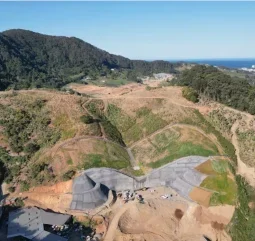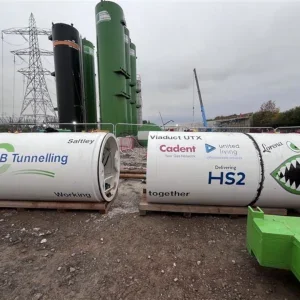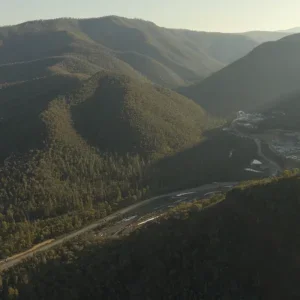
Tunnelling teams working on Australia’s Coffs Harbour bypass have broken through on what will be the second largest of the project’s three tunnels.
The Ferrovial and Gamuda Australia project team broke through the heading in one of the tubes of the 320m-long Shephards Lane Tunnel today. The second tube breakthrough is expected in about a week. The team will now start controlled blasting the bench of the tunnel tubes.
Today’s milestone follows a breakthrough at the 410m Gatelys Road tunnel in November last year. Gatelys Road is the furthest progressed of the tunnels with the tubes being sprayed with waterproof lining.
Waterproofing of the other two tunnels – Shephards Lane and Roberts Hill – is expected to be completed before the end of this year.
Transport for NSW North Region director Anna Zycki said breaking through was a significant achievement but there was still plenty of work to do before the tunnels could take traffic.
“The top of the tunnel tube will be excavated and then the project team will go through again to excavate the base of the tunnel tube,” Zycki said. “All the electrical equipment needs to be installed, the inside of the tunnel waterproof sealed, the road and cycleways constructed, and system testing carried out.
“This work will continue over the next 18-20 months, but this milestone is worth celebrating.”
Zycki said waterproofing of Gatelys Road Tunnel was progressing and excavation would on the 160m-long Roberts Hill Tunnel would start next month.
“That work will be carried out 24/7 and we’re anticipating we’ll have breakthrough there by mid-year,” she said.
“We expect all three tunnels will be waterproofed by Christmas this year and then we’ll spray them with concrete, install the paving and finally carry out the electrical fit out.”
Over the three tunnels, waterproofing will be applied to approximately 52,000m2 of surface in two layers. About 320,000kg of the waterproofing product will be used to achieve this lining.
A single team – typically three people – can waterproof the equivalent of 400-700m2 of tunnel in a shift which varies due to climatic conditions etc encountered on site.
The Coffs Harbour Bypass, the final section of the M1 Pacific Highway upgrade, is jointly funded by the Australian and NSW governments. Each of the three tunnels will have two tubes, each designed to carry two lanes of traffic, with space for cyclists.







